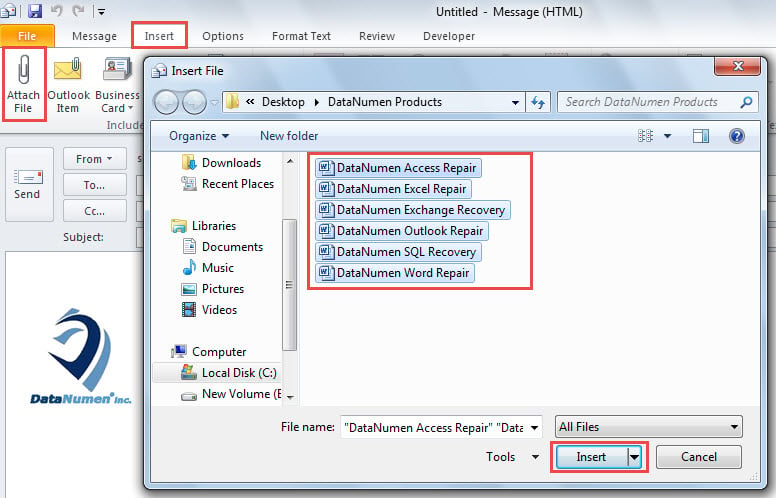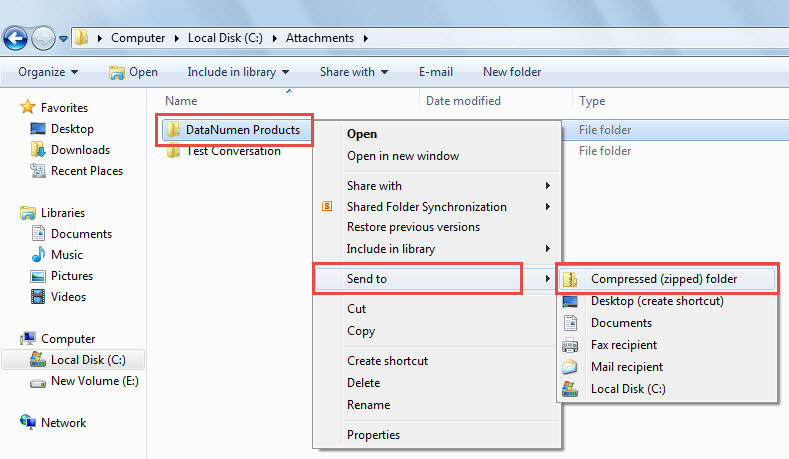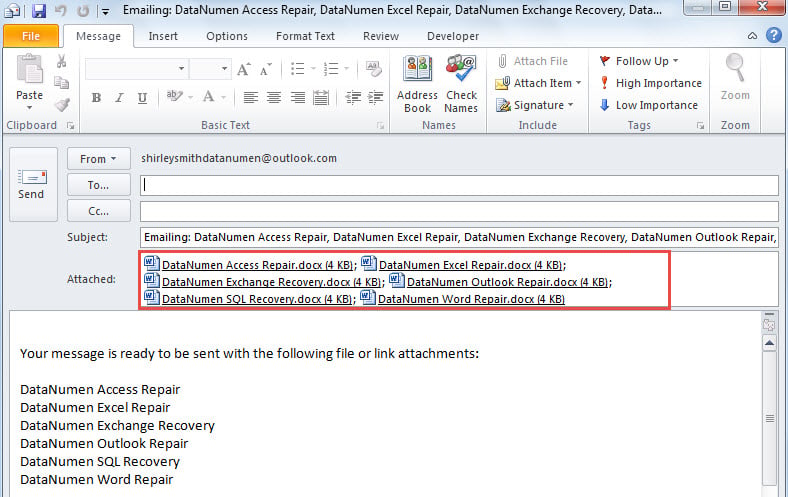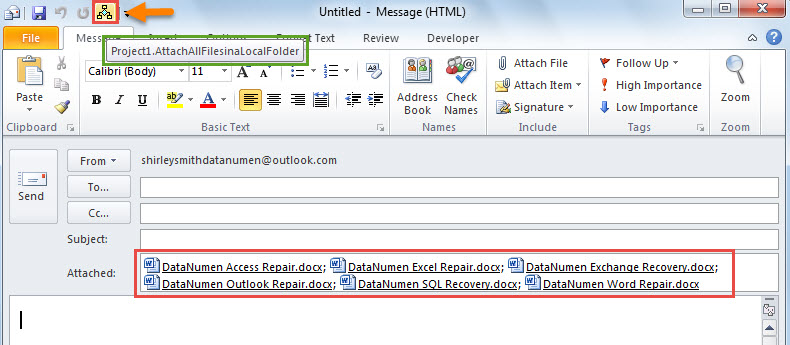If you frequently need to attach all files in a local folder to an Outlook email, you can use the 3 quick approaches introduced in this article.
There is no denying that it’s pretty easy to attach one file to an Outlook email. But for many Outlook users, it’s nearly a very common case that they need to attach all the files in a specific local folder to an Outlook email. Thus, in response to this requirement, here we will expose 3 handiest means to you. You can choose any as per your needs and preference.
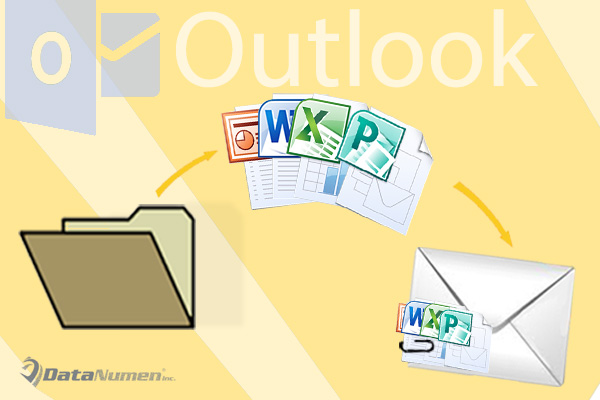
Method 1: Use “Attach File”
- Firstly, open an email and compose it at will.
- Then switch to “Insert” tab.
- Next click “Attach File” button.
- And then in the popup “Insert File” dialog box, select all the files by “Ctrl + A”.
- Subsequently, click the “Insert” button.
- Finally you can finish the email and send it out as usual.
Method 2: Use “Send to Mail Recipient”
- In the first place, browse to the specific local folder in your File Explorer.
- Then, after finding the folder, right click on it.
- Subsequently, from its right clicking menu, you can select “Send to” > “Mail recipient”.
- Lastly, at once, a new Outlook email will open and all the files in this folder will be added to it, like the following screenshot:
Method 3: Use Outlook VBA
- Firstly, press “Alt + F11” key buttons in Outlook main window.
- Then open a module that is not in use.
- Next copy and paste the following VBA codes into it.
Sub AttachAllFilesinaLocalFolder()
Dim objMail As Outlook.MailItem
Dim strFolderPath As String
Dim strFileName As String
If TypeName(Application.ActiveInspector.CurrentItem) = "MailItem" Then
Set objMail = Application.ActiveInspector.CurrentItem
End If
'Change the folder path as per your real case
strFolderPath = "C:\Attachments\DataNumen Products\"
strFileName = Dir(strFolderPath)
While Len(strFileName) > 0
objMail.attachments.Add (strFolderPath & strFileName)
strFileName = Dir
Wend
End Sub
- After that, open a new email and add the new macro to Quick Access Toolbar of message window.
- Finally, you can click the new macro button in Quick Access Toolbar. Then all the files in the specific local folder will be inserted immediately.
Comparison of the 3 Methods
| Methods | Advantages | Disadvantages |
| Method 1 | It’s the most frequently used way for most Outlook users. | You need to remember the correct folder path when browsing to the specific folder. |
| Method 2 | It doesn’t require users to open Outlook at first. | By this means, the new email will use the file names as subject and auto insert many your unexpected characters in the email body. |
| Method 3 | It’s very suitable to those who often need to insert the files in a specific folder in that it doesn’t demand users to navigate to the folder path. | Since then, you have to keep eye on potentially malicious macros in suspicious emails. |
Keep Malicious Emails at Bay
Outlook is vulnerable to various factors, including frequent improper shut down, internal logical errors and external viruses and malware. Therefore, if you intend to use macros, you should beware of the potentially unsafe links in the malicious emails. In addition, you need to get hold of a robust repair tool in vicinity, such as DataNumen Outlook Repair, which can repair Outlook issues in quick time.
Author Introduction:
Shirley Zhang is a data recovery expert in DataNumen, Inc., which is the world leader in data recovery technologies, including repair mdf and outlook repair software products. For more information visit www.datanumen.com
